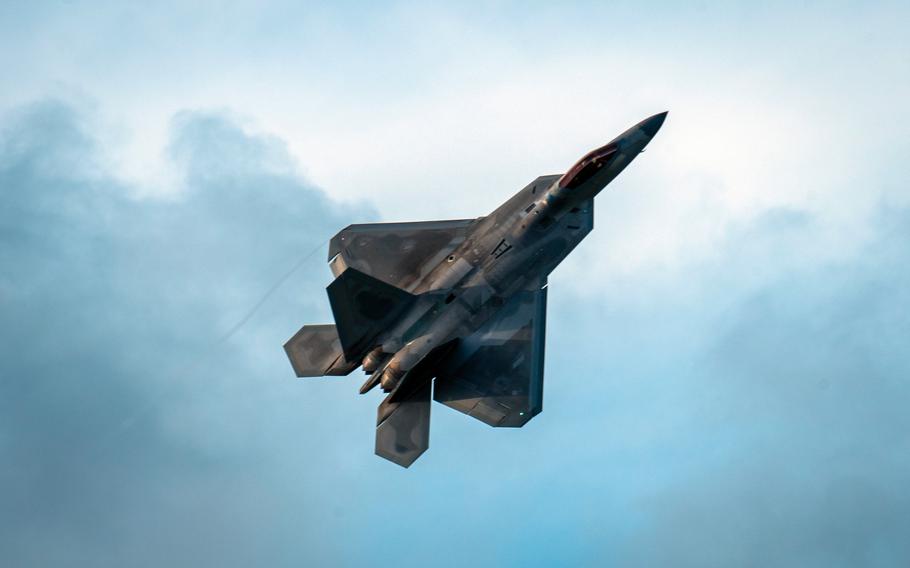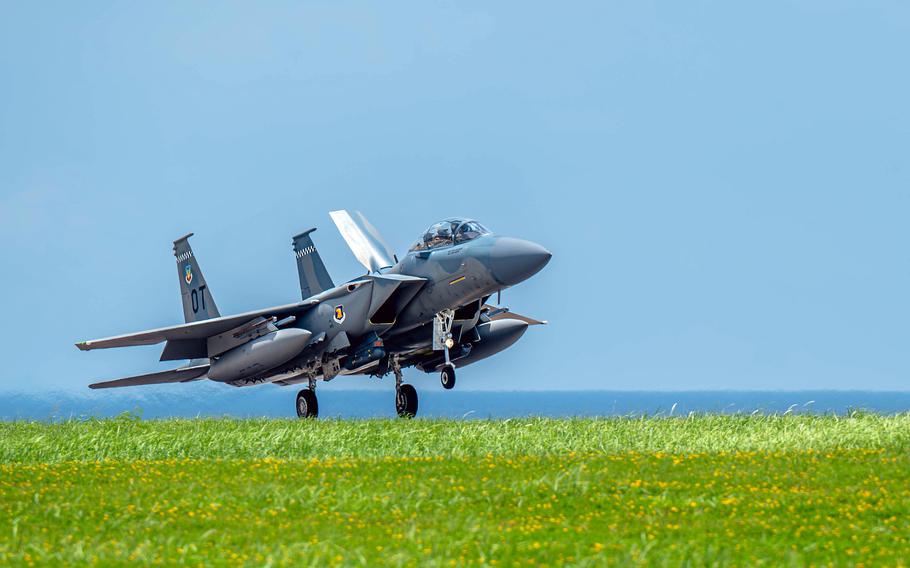
An F-22 Raptor assigned to the 3rd Air Expeditionary Wing trains during the Resolute Force Pacific exercise near Tinian, Northern Mariana Islands, July 17, 2025. (Tala Hunt/U.S. Air Force)
The Air Force is testing a key warfighting concept this month as part of its largest contingency response exercise in the Indo-Pacific, deploying more than 400 aircraft and 12,000 personnel to more than 50 locations across the region.
Resolute Force Pacific, which began July 10 and runs through Aug. 8, is designed to evaluate the service’s agile combat employment strategy, which emphasizes rapid deployment, flexible basing and dispersal operations.
The concept aims to shift operations from large, centralized air bases to smaller, more agile clusters that are harder for adversaries to target.
“This combined force highlights the exercise’s emphasis on joint and multinational interoperability and its significance for regional security,” Pacific Air Forces said Friday in an unsigned email. Interoperability is a term the military uses to describe the ability of a country’s armed forces to use another’s training methods and equipment.
The command described Resolute Force Pacific as a demonstration of its “ability to rapidly disperse thousands of servicemembers and associated equipment across the region to defend the United States, ally and partner nations, and their interests in the Pacific,” according to a July 8 release.
The exercise involves personnel and aircraft from the U.S. and partner nations, with operations spanning more than 3,000 miles, the release said. It’s part of the Air Force’s Department-Level Exercise series and includes participation by other U.S. military branches, Air Mobility Command and U.S. Special Operations Command.
Aircraft deployed to various Pacific locations throughout the week. F-35A Lightning II fighters arrived at Misawa Air Base in northeastern Japan to support the 35th Air Expeditionary Wing, which was stood up for the exercise, and KC-135 Stratotankers and KC-46A Pegasus tankers flew into Yokota Air Base in western Tokyo.
On Tinian in the Northern Mariana Islands, F-22 Raptors with the 3rd Air Expeditionary Wing at Joint Base Elmendorf-Richardson, Alaska, operated from an austere runway, a core scenario from ACE.
Additional operations took place in Hawaii, Guam and international airspace, according to PACAF.
The command said the exercise is not a response to any current events or conflicts, according to a July 3 email.
The Air Force has promoted ACE as a way to increase survivability and operational flexibility in the Indo-Pacific, where fixed bases could be vulnerable to long-range missile threats.

An Air Force F-15EX Eagle II, assigned to 85th Test and Evaluation Squadron at Eglin Air Force Base, Fla., lands at Kadena Air Base, Okinawa, July 16, 2025. (Nathaniel Jackson/U.S. Air Force)
On July 12, two F-15EX Eagle IIs with the 85th Test and Evaluation Squadron at Eglin Air Force Base, Fla., arrived at Kadena Air Base, Okinawa, for short-term training. Thirty-six F-15EXs are scheduled to be permanently stationed at Kadena next spring.
Both F-15EXs are also participating in Resolute Force Pacific, the 18th Wing said in a Friday news release. They departed Okinawa on Sunday, it wrote in an unsigned email Monday.